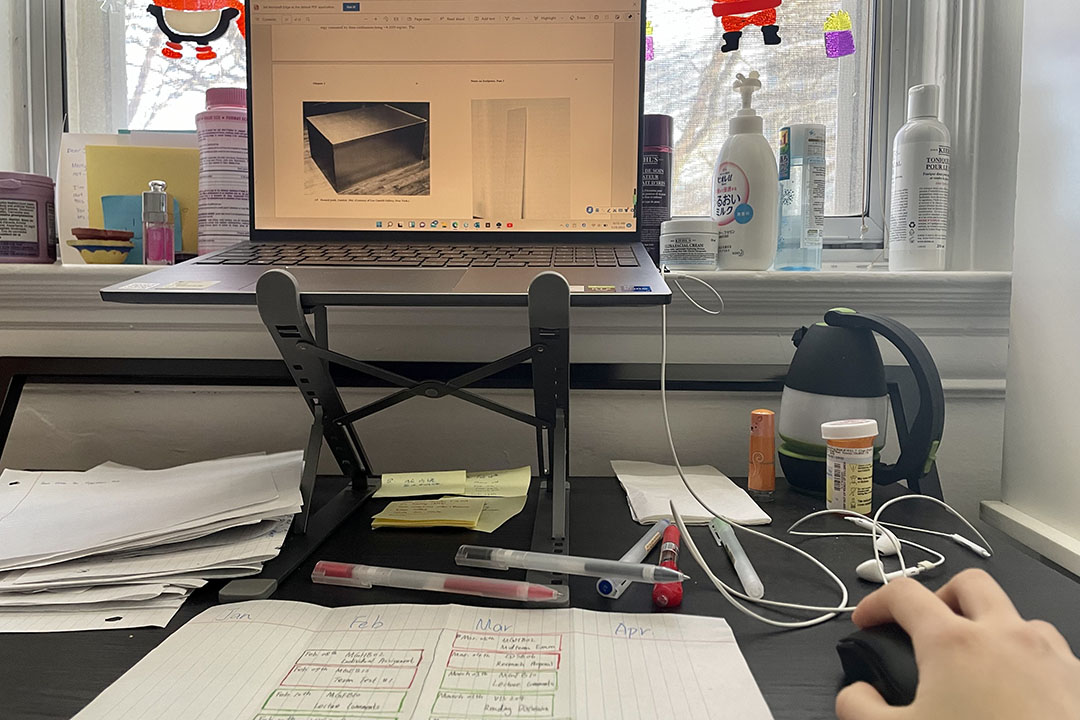U of T is meant to be an institution of innovation and higher learning, but instead of finding long-term solutions, the university’s response to the pandemic has been largely reactive.
I recently read the university’s statement on returning to in-person learning starting February 7. Personally, I’m nervous about attending in-person lectures, especially as epidemiological studies show that COVID-19 deaths have increased in the past month. On the other hand, students are dropping out at unprecedented rates and facing mental health barriers as a result of online education.
The choice of preferred mode of education delivery has remained unclear throughout the pandemic, but I wonder if we can do better than that.
I find it odd that as a student who pays to do the work necessary to receive an education, I have no say in how I do that work, even when the environment is dangerous. Instead, it seems that students are being put at risk of physical and psychological harm to save U of T from having to innovate.
Universities by their very nature are responsible for providing students with an education. If U of T cannot uphold its end of the bargain without potentially putting us in danger, the university has no right to be charging tuition or to have 4,728 staff members on the 2021 Sunshine List — the list of public employees who make over $100,000 per year. It would be absurd to pay to eat at a potentially unsafe restaurant, and it would be the owner’s responsibility to ensure the safety of their customers. Similarly, the onus is on U of T to keep its students safe, while providing the quality education those students paid for.
The World Economic Forum predicts that online learning will be the way of the future. I would like to see our institution be a leader and invest in the labour required to offer students the choice between in-person and online classes. We have seen this hybrid model fail in the Ontario education system, as teachers struggled to host both in-person and remote groups of students simultaneously.
Studies show that many students have felt more sedentary, anxious, and depressed during their online semesters, while others are finding that decreased distractions are allowing them to thrive. This remains an incredibly polarizing issue because it’s subjective; what works for one student may inhibit another.
However, as students, we can demand that the university be preemptive and cater to all learning styles, not only the most typical ones. An information session about the return to in-person classes will be held soon by the UTSC administration, and I urge students to show up and make their voices heard.
Online education requires more than a video camera to keep students engaged and learning. Universities are particularly suited to be leaders in using the hybrid model effectively; they can make use of endowments while coordinating between education and media departments to find innovative ways to teach and learn.
This would require additional labour, like hiring teaching assistants dedicated to summarizing and asking questions from online students, recording the class chat, and acting as the liaison between online learners and the professor. Teaching online is a skill unto itself, which requires media knowledge and new media engagement strategies, and there is no reason to expect every professor to succeed in teaching online, especially without institutional support.
A model with both in-person and online classes would allow students who want to attend in-person lectures to attend class in a lower-risk environment during a pandemic or even during flu season. This would also make our campuses more accessible to students who cannot afford to relocate, give a choice to the students who require in-person components to meet scholarship requirements, or — like myself — find fulfilling in-person learning to be inaccessible due to hyperstimulation. I found participation in the traditional university environment very difficult, and while I receive accommodations, none have enabled me to participate in class as well as an online environment has.
According to the Americans with Disabilities Act (ADA), in the US, before the pandemic, requests for an online learning environment could be denied by a university due to financial or administrative burdens. However, in the scramble to keep students during the pandemic, educational institutions proved that online learning was possible the whole time — there was just no profit in it before.
To any future claims of institutional burden: it is the responsibility of an institution to be accessible. The students hold no responsibility in making the profit model of their university viable.
The ADA also provides exceptions to the university in mandating accommodations for students with a disability if the accommodation — in this case, working online — would significantly alter the nature of the program or curriculum. In other words, accommodations cannot give students unfair advantages, lower the university’s academic standards, or change course or program requirements. However, during the pandemic, course instructors have largely managed to adapt to online and hybrid formats without compromising learning quality or fairness.
The ADA has stringent standards, so if online accommodations no longer fall under the above exceptions, we will likely soon see a rollout of mandates forcing US institutions to invest in online learning, as pandemic-driven online learning has challenged our ingrained ideas of what fulfilling educational experiences look like. This investment in the future would benefit not only students with disabilities but also any other students who cannot participate or find it difficult to participate in the traditional in-person university environment.
Integrating online classes could be the norm for postsecondary education. I want to graduate from a university that takes preemptive steps to be a leader in accessible education, instead of a university that only reacts when it is eventually forced to mandate this change.
Emily Faubert is a fourth-year journalism and philosophy student at UTSC.


